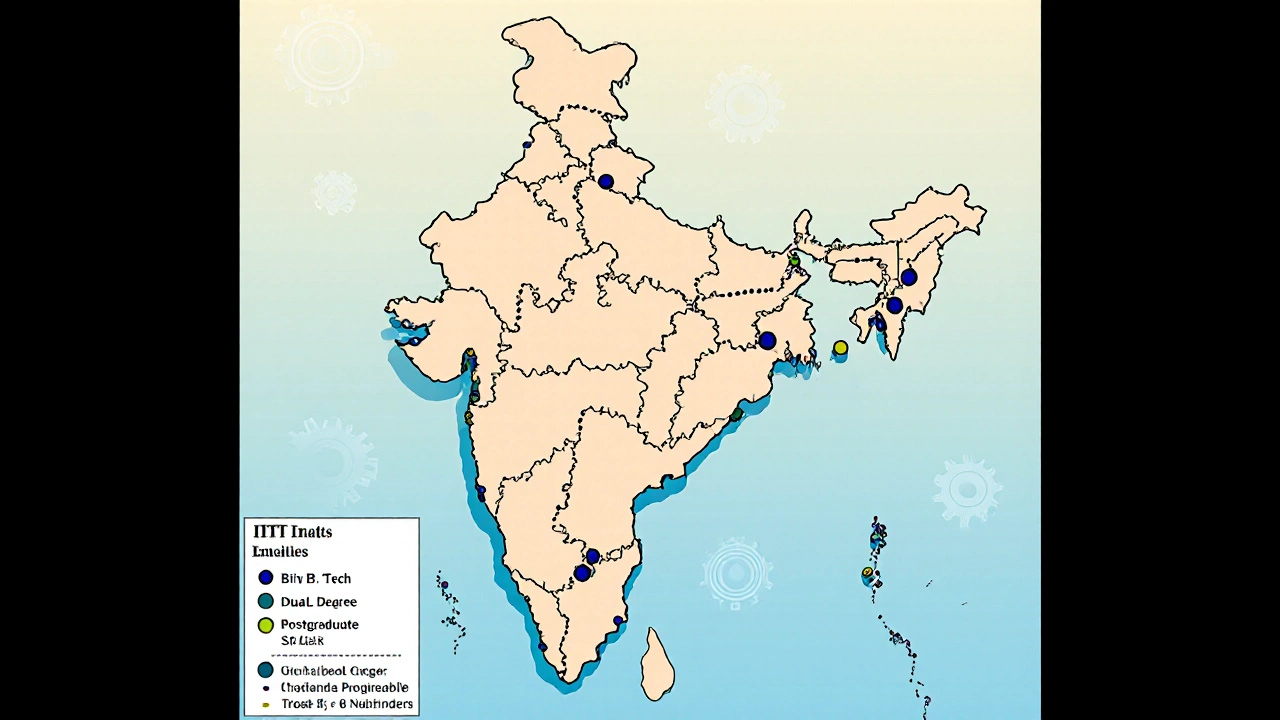IIT Seat Count 2025: How Many Seats Are Available and Where?
When you think about getting into an IIT, India’s premier engineering institutes that admit students through the JEE Advanced exam. Also known as Indian Institutes of Technology, these schools are the top choice for students aiming for high-paying tech careers or research paths. The first question most families ask isn’t about fees or campus life—it’s about IIT seat count 2025. How many seats are actually open? And who gets them?
The total number of undergraduate seats across all 23 IITs in 2025 is expected to be around 16,500. That’s up slightly from 2024, thanks to new programs and expanded intake at institutes like IIT Jammu, IIT Dharwad, and IIT Palakkad. But here’s the catch: those seats aren’t evenly spread. IIT Bombay, IIT Delhi, and IIT Madras still take the biggest share—each offering over 1,000 seats. Smaller IITs might have under 400. The cutoffs aren’t just about rank—they’re about where you’re competing. A top 500 rank might get you into any IIT, but a rank of 8,000? That’s only enough for the newer campuses or less popular branches like architecture or humanities.
Reservation policies shape who fills those seats. About OBC-NCL, a category for Other Backward Classes with non-creamy layer status, eligible for 27% reservation in IIT admissions students get 27% of seats. SC/ST, Scheduled Caste and Scheduled Tribe candidates who receive 15% and 7.5% reserved seats respectively in IIT admissions together make up another 22.5%. There’s also a 10% EWS quota for economically weaker sections, and special provisions for PwD candidates and women (who now get a 20% supernumerary quota in many branches). That means the actual open competition pool is smaller than the total seat count suggests. If you’re a general category candidate, you’re competing for roughly 10,000 seats, not 16,500.
Branch allocation matters just as much as the institute. Computer Science and Electrical Engineering still draw the highest ranks, but mechanical, civil, and even newer fields like data science and AI are catching up fast. Some IITs now offer dual degrees, five-year programs, and integrated MSc courses—each with their own seat limits. And don’t forget: seats are tied to the exam year. If you’re reappearing for JEE Advanced, your seat count is based on the current year’s quota, not last year’s.
What this means for your strategy
Knowing the IIT seat count 2025 isn’t just about numbers—it’s about positioning. If you’re aiming for a top IIT in CS, you need to be in the top 1,500. If you’re flexible on location or branch, you can afford to be a bit lower. The newer IITs are improving fast, with better faculty and placements. Many now offer the same degree as the older ones, just with less name recognition. And with more seats available overall, your odds are better than they were five years ago—but competition hasn’t dropped. You still need a solid JEE Advanced score, a smart preference list, and a clear understanding of how reservation affects your chances.
Below, you’ll find real posts that break down coaching options, city choices, and exam strategies tied directly to getting into an IIT. Whether you’re comparing Allen vs Aakash, picking the best city for JEE prep, or trying to understand how many seats are left after reservations—everything here is built around one goal: helping you land a seat at an IIT in 2025.
Total IIT Seats in India 2025 - Complete Count & Distribution
Discover the exact number of IIT seats in India for 2025, how they're distributed across programs and institutes, reservation quotas, and what the figures mean for JEE aspirants.
